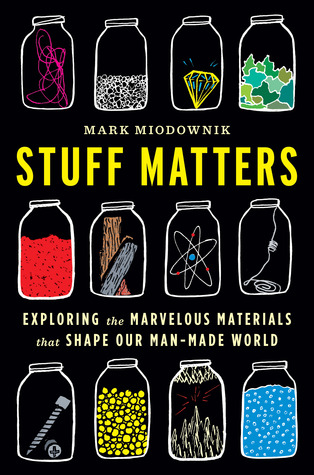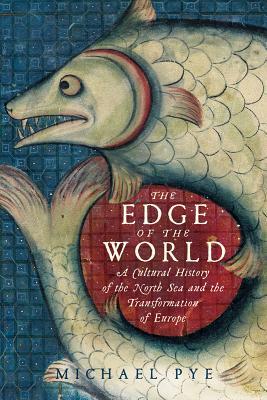Stuff and the World: two book reviews

I’ve finished* two non-fiction books so far this year. This is…not a good rate for me to get through my TBR pile before Earth is enveloped by the sun. Unfortunately, the amount of non-fiction I read tends to be inversely proportional to the amount of time I spend reading the news so by 2018 standards I’m doing pretty well. I read pretty broadly, but I mostly tend to pick up either popular science or history books. I’m always looking for the sort of general surveys that give an extra layer to the world and how things that I might not be aware of function.

Stuff Matters, by Mark Miodownik is a “frolic” through some of the everyday materials that make up our lives, explaining why these materials have the properties that they have and how those properties gave them special places in our society. The book covers steel, paper, concrete, chocolate, foam, plastic, glass, graphite, porcelain, and joint implants. So far so good, right? Well. Stuff Matters was very….whimsical. Which, ok, fine, let’s appreciate the wonder in the ordinary, but let me just put this out there, a screenplay WAS NOT THE FORMAT I WANTED USED TO TELL THE HISTORY OF PLASTICS. Why. Why did he go rogue for a chapter, regular prose would have worked just fine.
Parts of this book were very good which makes the flights of whimsy all the more infuriating. Miodownik does a good job of clearly explaining in simple how the materials science works–why does paper work the way it does, how does a pencil write, etc. This is hard to do! He does it really well! But, when he starts wandering off and making grand statements about the historical societal ramifications of said properties I really really needed him to cite some sources. For example, I don’t buy that one of paper’s greatest contributions to world history is love letters. It is possible that I just don’t have enough romance in my soul.
But I wish with all my heart that he’d had a friend (or at least an editor) that could’ve taken him aside and asked if he was certain he was making the best choices and gently suggested that maybe this was not the time to attempt screenwriting.

The Edge of the World by Michael Pye is a cultural history of the areas bordering the North Sea spanning from approximately 500-1500 AD.
This was excellent and I strongly recommend to anyone with an interest in European history. Best yet, this is a book on pre-Modern Europe that doesn’t just take the Romans’ word on everything. Yes, I understand that they literally wrote the history but the Romans were also super judgy about everyone. I appreciated that Pye made a point of mentioning when his primary sources were probably biased or being disingenuous, and also that he was explicit about the dangers of romanticizing this part of the world too much (see: Nazis)–it made me trust him as a historian much more than I did the last couple of authors covering similar topics that I’ve read. Pye dug down and did a convincing job explaining how the cultures and economies around the North Sea worked.
Edge of the World is organized by theme, and while it’s loosely chronological it does jump around a bit geographically. This is not a book that’s particularly concerned with who was in charge of which bit of land when, and talks more about cities than nations, but Pye does a good enough job of throwing in dates/place names (and the maps helped a lot) that I didn’t have a hard time keeping track of where/when he was talking about.
This is also another book that makes a certain type of fantasy novel hard for me to read (what is the economy? Where is the diversity?) but that’s another issue.
*And then there was the one that annoyed me so much after two pages that I decided it was not for me. Usually I try to at least hold out for a chapter, but I realized I’d spent more time complaining about those two pages on twitter than it took to read them.

